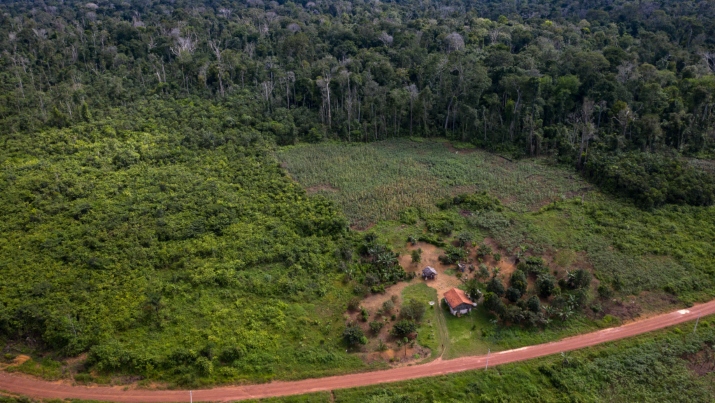Study shows that secondary forests had limited effect in mitigating climate change
Study shows that secondary forests had limited effect in mitigating climate change
A new study by researchers of the Sustainable Amazon Network (RAS) shows that the secondary forests (or thickets) in the Amazon region, despite being important for environmental rehabilitation, have contributed little tothe absorb carbon and control climate change. In the last three decades, these forests have absorbed only 10% of what was emitted by deforestation in the region. The result of the work, lead by Brazilian and foreign scientists, was published recently in the international periodical Global Change Biology and can be accessed on this link.
Secondary forests, or thickets, are those that grow in previously deforested areas. Out of the 700,000 square kilometers that had been deforested in the Amazon region, according to the National Institute for Space Research (Inpe), about 130,000 km ² are covered by secondary forests.
The study, in which Embrapa Eastern Amazon is a participating institution, used data from the open-source MapBiomas to map the age, extension and carbon stocks of secondary forests in all of the Brazilian Amazon in the period from 1986 to 2017. After calculating how much carbon had been lost due to deforestation, the scientists discovered that, in over 30 years, the growth of secondary forests in deforested areas in the Brazilian Amazon region offset less than 10% of the emissions resulting from the loss of old forests.
The researcher Charlotte Smith, from Lancaster University (UK) and lead author of the study, explains that secondary forests have an incredible potential to store large amounts of carbon. “However, it takes them a long time to build this carbon supply, and hence, without a drastic decline in deforestation rates, their environmental benefits will keep being undermined", the scientist warns.
The researchers also discovered that most secondary forests are relatively young - over 85% are less than 20 years old and about half (42%) are less than five years old. This happens, according to specialists, because the secondary forests are also subject to deforestation. "Out of all the secondary forests mapped during the 32-year period, 60% had been deforested again by 2017", the scientist reveals.
Climate and landscape also have influence
The researchers analyzed other factors that affect secondary forest growth and carbon absorption, such as climate, landscape and proximity to old forests, which can be sources of seeds. They discovered that the majority of secondary forests is located far from primary forests, in the driest parts of the Amazon region. These factors suggest that the expectations regarding the role of such forests in absorbing carbon need to be adjusted to different contexts.
The researcher Jos Barlow, from Lancaster University, co-author of the study, explains that even though secondary forests can be an important part of the solution for climate change, it is also important not to overstate their relevance. “Despite their scale and importance for climate targets, our understanding of their contribution for the tropical carbon balance is incomplete. The extent to which carbon emissions from deforestation have been offset by secondary forest growth is still not clear”, states the scientist.
Support to public policyAccording to Embrapa Eastern Amazon's researcher and study co-author Joice Ferreira, the findings can inform environmental management policy and action in the Amazon. “Concrete examples include the Plano Amazônia Agora [Amazon Now Plan], which resorts to secondary forests and reducing illegal deforestation in order to zero out net carbon emissions”, the scientist underscores. To support the public policy researchers calculated carbon stocks in secondary forests in different regions of Pará state. Another practical example given by the researcher is Pará's Normative Instruction 02/2014, known as the “Law on Thickets”, which was also informed by science. It establishes criteria to conserve secondary forests in the state, and thus prevent the removal of the vegetation from the areas that provide the most relevant environmental services. Joice Ferreira stresses that the recent study does not diminish the role of secondary forests in solutions against climate change, but rather shows that their capacity is limited against deforestation rates in the region. “Therefore, reducing deforestation, maintaining thickets, and sustainable farming in previously incorporated areas are vital to fight climate change”, she concludes. |
Translation: Mariana Medeiros
Ana Laura Lima (MTb 1268/PA)
Embrapa Eastern Amazon
Press inquiries
amazonia-oriental.imprensa@embrapa.br
Phone number: +55 91 99110-5115
With information from the University of Lancaster (UK)
Further information on the topic
Citizen Attention Service (SAC)
www.embrapa.br/contact-us/sac/

